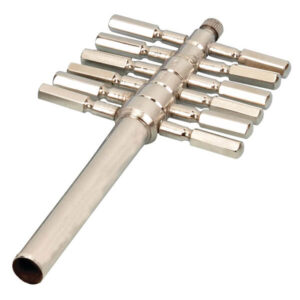How a Cork Borer influences the effectiveness of laboratories
One of the many useful tools in scientific investigations is a device called a cork borer, which allow you to create holes in rubber or cork from glassware— a simple device and a must-have item in any laboratory that involves the use of glass labware. In any type of filtration setups or insertions of tubing into stoppers, the cork borer is an astute mechanism for accuracy and safety alike. Here are some key tips to become more efficient when using a cork borer in your projects.

- Select the Right Size Borer
When selecting a cork borer to use, first determine the size of the tubing or equipment to be inserted and select a cork borer with an appropriate diameter size before starting the project. If not, the sizes will not match, which might cause erroneous fittings, leakage, or damage to the stopper material.
- Dulcify the Cork or Rubber Stopper
To ease boring, soak the cork or rubber stopper in warm water for a few minutes to soften it. It allows for smoother penetration and minimizes crystal fractures and irregular holes. If using soda glassware, make sure the stopper fits tightly to prevent air leakage.
- Use a Lubricant
What we do is use a small amount of glycerin or water to lubricate the cork borer so that you can get a clean cut through the cork in one go. This comes in especially handy with inflexible materials.
- Insert with a Twisting Motion
Instead of pushing the cork borer directly through, use a gentle twist with consistent pressure. This technique creates a clean, round hole without ripping the cork or stopper.
- Work on a Stable Surface
Bore the cork or rubber stopper while it is resting on a solid, non-slip surface. This ensures stability and reduces the risk of injury or mistakes occurring during the moving process.
- Clean the Borer After Use
Always clean your cork borer well after using it for your project. The residue remaining inside the tube has the potential to affect precision in future uses, especially with MERCURY PURIFIED or similar projects.
Conclusion
Best Practices Usage - this is laboratory projects You require accurate and clean cuts whether you’re doing soda glasswork, utilising a laboratory centrifuge, or using a laboratory thermometer. Furthermore, safety measures must always be our first concern when dealing with any substance, even something as common as MERCURY purified.
So if you want high-quality glassware used in laboratory settings or a dependable instrument, such as a hydrometer for specific gravity, you can trust the likes of MVTex for the right products. Leveraging the right tools can make your experiments faster and more effective overall.
